Autumn chill is settling gently in the garden and some species of birds have already flown to milder climes to spend the winter. More concerned with the weather than with tidying up, they have left your nest boxes behind, leaving all their belongings: feathers, straw, twigs and sometimes droppings. Take advantage of their absence to take stock and give the boxes a thorough clean before the breeding season returns. Your future feathered tenants will be pleased to find a clean, parasite-free place to raise their brood. This clear-out can also be a great educational activity for your young gardeners in short trousers. So, arm yourself with your best gloves and brush, here are our tips and advice for cleaning a bird nest box properly.
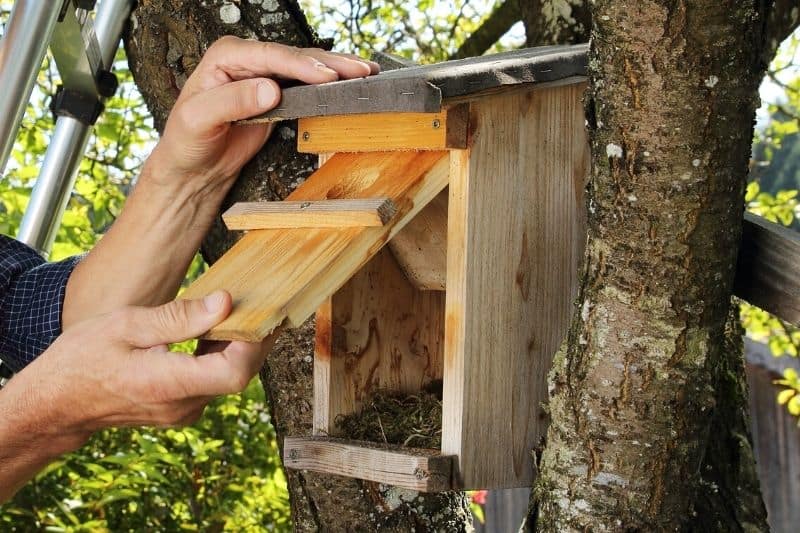
Why clean a nest box?
Some birds will not return to a nest box if it has not been cleaned of the previous nest. They will prefer to build elsewhere. This is the case, for example, for sparrows, the robin and tits. Indeed, an old nest can harbour parasites such as bird lice, and also diseases. By cleaning it, you will allow them to nest in good conditions and thus contribute to the birds' health.
Other birds, such as tits, worry less and may build their nest directly on top of the old one. By raising their nest in this way, these birds bring their chicks closer to the entrance hole. The young chick is therefore no longer protected from a bad fall or from predator attack.
This thorough clean also allows you to check the condition of fixings and the roof's watertightness of the little house.
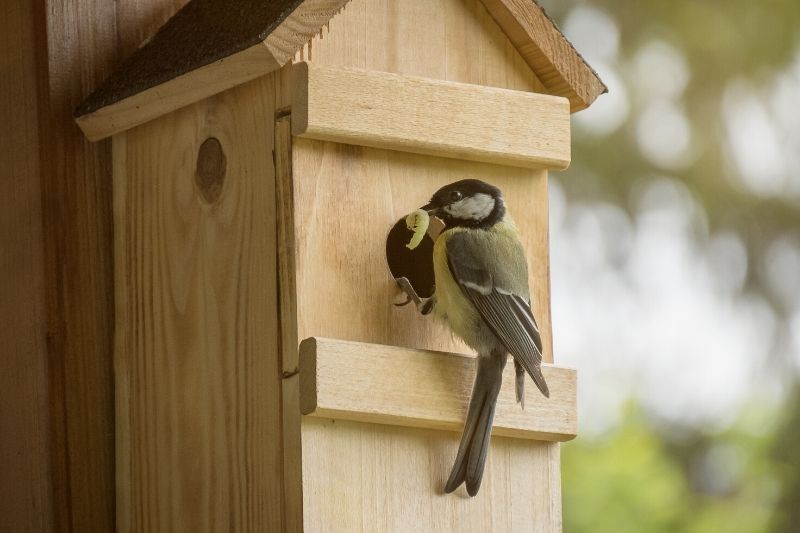
Perched on the entrance hole of its nest box, a tit brings caterpillars to its chicks
When to clean a nest box?
Some species abandon the nest as early as August, but others make late broods and occupy the boxes until the end of September. It is best to wait until October, or even November to clean nest boxes without risking disturbing our feathered friends and their young. The boxes will then be ready to welcome new nests from the end of winter.
Avoid cleaning nest boxes during winter if possible. Indeed, they can serve as a refugium for small mammals and insects seeking shelter from the cold, such as ladybirds, some solitary bees, rodents and bats. These small shelters can also serve as night roosts for non-migratory birds. So before acting, take time to observe whether the boxes are empty. And if your nest boxes are occupied during winter, consider a quick clean at the start of spring.
Be careful: some small garden birds, such as the great tit, like to cover their eggs during incubation. As a rule, never touch nests during the breeding period.
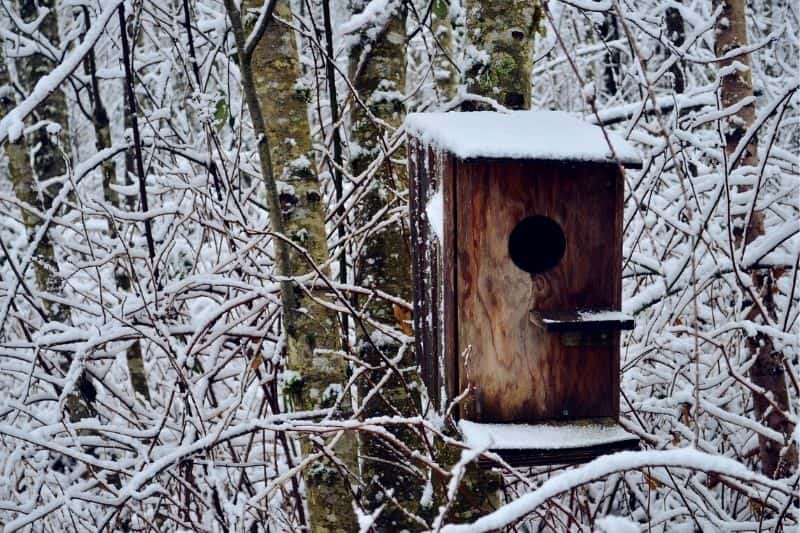
Nest boxes can turn into insect hotels during winter
What equipment do you need?
- brush
- pair of gloves
- small garden trowel or a stick
- mask to avoid inhaling dust
- disinfectant
How to clean?
1- Put on gloves and a mask to avoid inhaling dust;
2- Take the nest box down from its support;
3- Open the removable hatch of the bird box;
4- Empty the contents with a stick or a small trowel. Warning: do not put your hands directly inside! Indeed, other occupants may shelter in this cosy bird nest, such as a stinging insect, a caterpillar or a small snake;
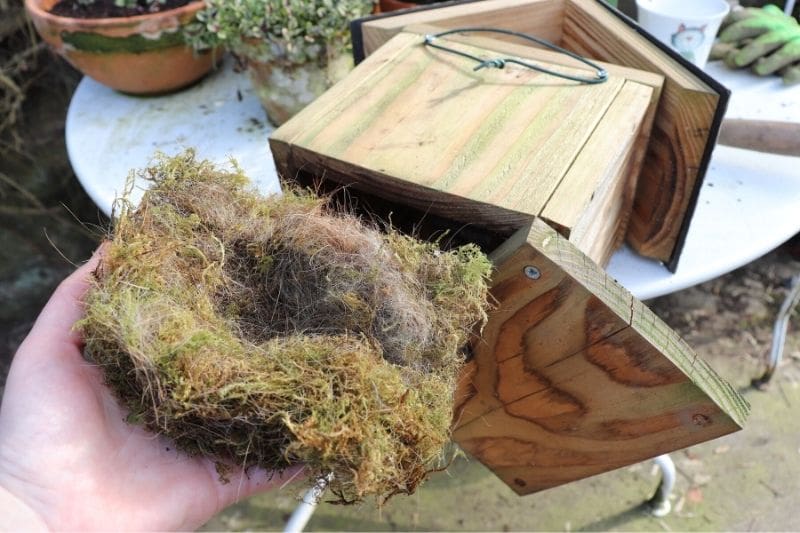
5- Brush inside and out to remove residues. Don't forget to unblock the small drainage hole, very useful in heavy rain;
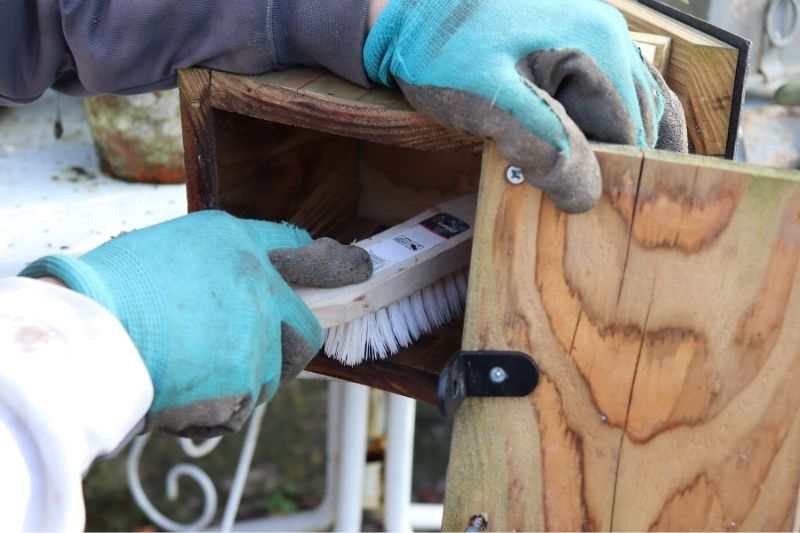
6- Check the condition of the boards and the roof's watertightness, and repair with small nails if needed;
7- Disinfect the interior. There are several techniques:
- You can simply clean the boards with boiling water. If rodents were present, dilute 10% bleach in it. Then rinse with clean water;
- Some gardeners use a blowtorch to destroy parasites. This technique is also used to clean chicken coops;
- Others simply coat the interior walls with thyme essential oil or wild thyme essential oil.
8- Leave the nest box to dry in the sun to prevent mould;
9- If the outside of the little box needs maintenance, coat it with linseed oil. Avoid painting or applying stain to decorate nest boxes. Indeed, different wild bird species prefer natural, untreated wood and do not like bright colours;
10- Before rehanging the little house, check the strength of the hanging hook and the hinges;
11- Close the hatch and install your nest box in a spot sheltered from prevailing winds and possible disturbance.
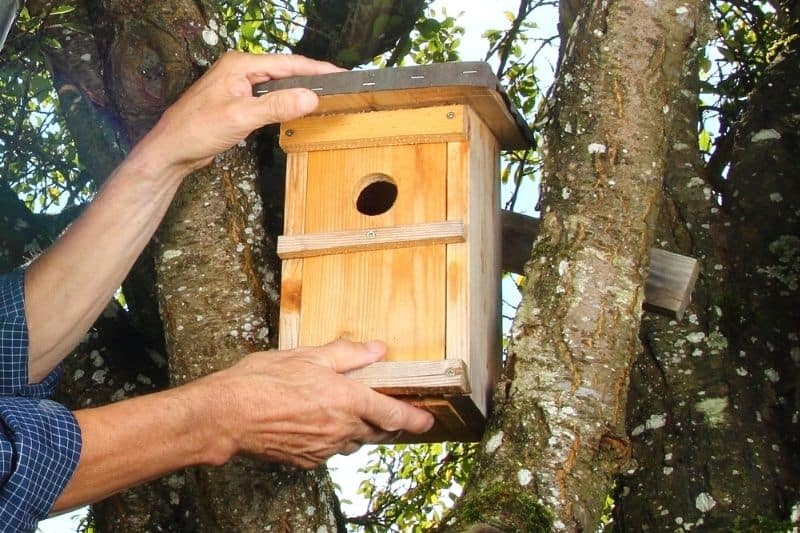
Note: Feel free to clean garden bird baths and feeders as well.
Further reading:
- Discover our tutorial to make a hanging seed feeder for birds in winter
- Browse our page to learn how to protect birds from their natural predators: cats
- Find Olivier in a video to learn how to feed wild birds properly and fill their feeders:






























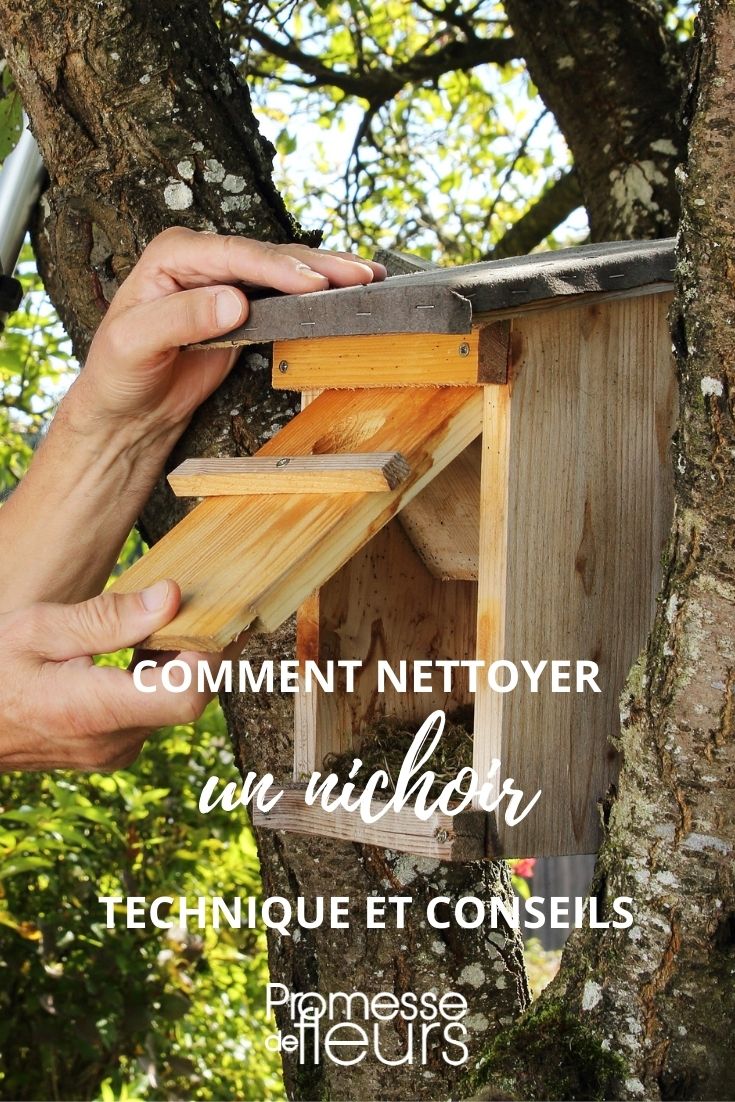
Comments